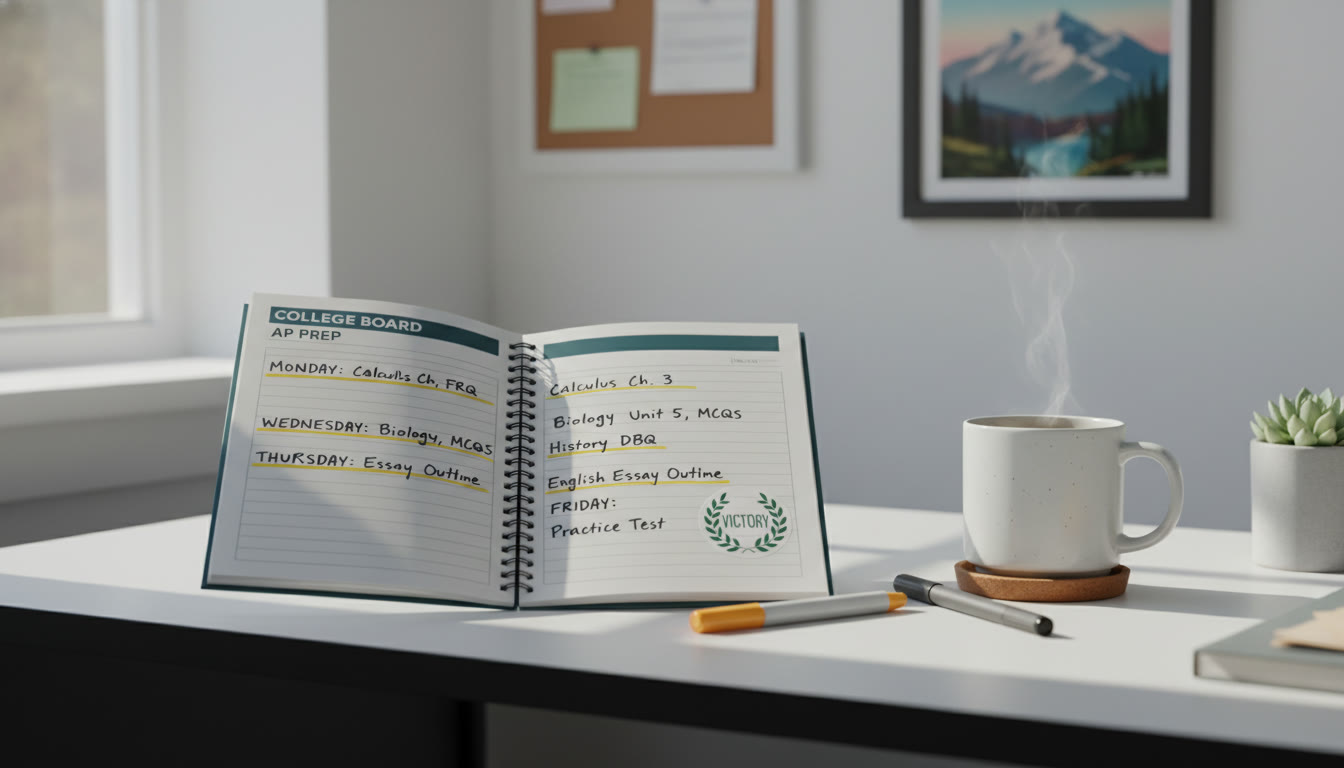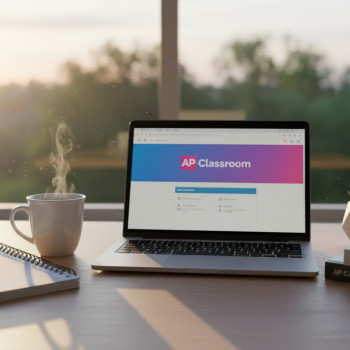Morning Person AP Plan vs Night Owl AP Plan: Which One Should You Be?
There’s a quiet debate in every high school hallway and online study group: should you rise with the sun and attack AP prep in the morning, or burn the midnight oil like a nocturnal scholar? The honest answer is: both can work — beautifully — if you design your plan around how your brain actually functions. This post walks you through two full, realistic AP study strategies (a Morning Person AP Plan and a Night Owl AP Plan), explains the science and trade-offs, and gives sample weekly schedules, practical tools, and gentle accountability ideas so you don’t just pick a plan — you own it.

Why Your Chronotype Matters for AP Prep
Chronotype — whether you’re naturally a morning person or a night owl — shapes attention, memory consolidation, mood, and peak cognitive performance windows. For AP exams, which reward consistent mastery of content and exam technique, aligning study sessions with your cognitive peaks makes studying more efficient and less stressful.
Two quick realities to keep in mind:
- Quality beats quantity. Two focused 50-minute sessions at your peak will outperform four distracted hours at odd times.
- Sleep is study. Memory consolidation happens during sleep, so aligning study timing to allow uninterrupted rest boosts retention.
Morning Person Advantages
- Fresh cognitive resources: attention and working memory are often strongest in the morning.
- Fewer evening distractions: social media, late-night messages, and school drama tend to die down.
- Structured days: morning study can set an intentional tone for the rest of your day.
Night Owl Advantages
- Long, uninterrupted blocks: evening and late-night hours often offer deeper, longer stretches of quiet time.
- Creative problem solving: some people report more creative breakthroughs late at night.
- Flexibility with daytime commitments: if you have early classes or sports, night study avoids clashes.
How to Choose: Quick Self-Check
Before committing, run a simple one-week experiment:
- Track your alertness on a scale of 1–5 every two hours for seven days.
- Note when you feel most able to read dense material, solve problems, or write clearly.
- Try short focused study sessions at your suspected peak and record how much you learn and retain.
If your best learning comes within two hours after waking, you’re likely a morning person. If your focus consistently ramps up after dinner, you might be a natural night owl. Either way, plan around those windows.
Two Full AP Plans: Morning Person AP Plan and Night Owl AP Plan
Below are two full plans built for AP students juggling classes, extracurriculars, and life. Use them as templates — tweak durations, swap content blocks, or layer in tutoring sessions.
Morning Person AP Plan — Weekly Template
Designed for students who feel sharp early and want to finish heavy cognitive work before school or during early free periods.
| Time | Monday – Friday | Saturday | Sunday |
|---|---|---|---|
| 5:45–6:15 AM | Wake, light exercise, quick review flashcards (15–20 min) | Wake, deliberate practice test block (60 min) | Sleep in slightly, active review and planning (60–90 min) |
| 6:30–7:30 AM | Focused subject session: new content + practice (60 min) | Deep dive on weakest unit (90 min) | Mixed: timed practice sections + reflection (90 min) |
| School Day | Short 10–15 min midday review (lunch) or AP Classroom progress checks | ||
| After School (4:00–6:00 PM) | Homework, light review, lab work, or group study (45–90 min) | Rest and lighter concept review (60 min) | Plan next week; organize notes (60 min) |
| Evening | Wind down; low-cognitive activities (reading, spaced repetition) | Catch-up or social time | Early bedtime to consolidate learning |
This plan emphasizes morning intensity, short midday refreshers, and lighter evenings to protect sleep.
Night Owl AP Plan — Weekly Template
Built for students who gain momentum later in the day and can sustain deeper late-night focus.
| Time | Monday – Friday | Saturday | Sunday |
|---|---|---|---|
| Morning | Gentle wake, light review flashcards or passive listening during commute | Active rest with light previewing (30–45 min) | Plan content for the week; low-energy review |
| Afternoon (3:00–5:00 PM) | Content lectures, classwork, and short practice (45–60 min) | Practice problem sets (90 min) | Timed practice sections + review (90 min) |
| Evening (7:30–10:30 PM) | Primary study block: new concepts, timed sections, essays (90–150 min) | Deep practice; full-length section (3 hours with breaks) | Review and lighter practice; early-ish wind-down |
| Late Night (10:45–12:00 AM) | Active recall and spaced repetition; summarize notes (30–60 min) | Creative review techniques (mind maps, teach-back) | Sleep planning and prep for Monday |
Night owls can stack longer uninterrupted sessions in the evening and late night while ensuring they get restorative sleep afterward.
Study Blocks: How to Structure Each Session
No matter your chronotype, each study block should fit a clear purpose. Here’s a simple framework you can apply to both plans:
- 10–15 minutes: Warm-up (quiz yourself, skim notes)
- 30–60 minutes: Focused learning (new content, worked examples)
- 10–15 minutes: Active recall (write a summary, solve a problem from memory)
- 5–10 minutes: Plan what you’ll do next and log progress
If you’re doing AP free-response practice, use the Pomodoro method (25/5 or 50/10) and always finish blocks by reviewing mistakes for at least 10 minutes.
Sample 4-Week Ramp-Up to AP Exam
Here’s a simplified timeline you can drop into either plan during the final month before exams. It balances content review, test technique, and recovery.
| Week | Focus | Sample Weekly Goals |
|---|---|---|
| Week 4 | Content triage | Identify top 6 weak units; 3 timed practice sections; 6 targeted review sessions |
| Week 3 | Skills & timing | 2 full timed practice exams; daily free-response practice; pacing drills |
| Week 2 | Consolidation | Review errors, flashcard blitz, 3 targeted content sessions, one full practice exam |
| Week 1 | Recovery & light practice | Low-intensity review, sleep optimization, logistical prep (materials, arrival plan) |
Practical Tips That Work for Both Chronotypes
- Use active recall and spaced repetition. Passive rereading is a confidence trap.
- Simulate test conditions regularly. Bluebook or practice software familiarity reduces test-day friction.
- Keep a single, tidy “AP Exam” notebook or digital folder for each subject to avoid scattered resources.
- Log mistakes in a “Correction Journal” and review only corrected entries weekly — this targets memory where it matters.
- Protect at least 7–9 hours of sleep; treat sleep like your most important study tool.
- Plan one “no study” evening per week to avoid burnout and maintain motivation.
How to Use Tutoring Most Effectively With Your Plan
Whether you’re a morning person or a night owl, tutoring can multiply your gains if used precisely. Instead of general help, aim for targeted sessions that fit your rhythms.
- Schedule tutoring during your cognitive peaks when possible — morning for morning people, evenings for night owls.
- Use tutors for clarification of tricky concepts, mock exams with feedback, and pacing coaching for free-response items.
- Sparkl’s personalized tutoring can fit naturally into either plan by offering 1-on-1 guidance, tailored study plans, and expert tutor feedback timed to your peak hours. Tutors can also use AI-driven insights to highlight weak areas and customize practice sets, speeding progress.
Time Management and Self-Care: The Unsung Heroes
AP success is a small, consistent rhythm of habits more than heroic last-minute cramming. Combine these practical self-care moves with your chosen plan:
- Meal timing: Eat a balanced breakfast if you study mornings; if you study late, keep a light, healthy snack to avoid sugar crashes.
- Movement: Short workouts or walks sharpen attention and relieve stress.
- Screen hygiene: Avoid heavy blue-light exposure 30–60 minutes before bed; use warm lighting for late-night study blocks.
- Mental reset: Short mindfulness sessions (5–10 minutes) after intense study can improve retention and reduce anxiety.
Examples & Case Studies (Realistic, Relatable Scenarios)
Want to visualize how this looks in a real life schedule? Here are two short stories.
Case 1: Maya — The Morning Marathoner
Maya is taking AP Biology and AP U.S. History. She wakes at 6:00 a.m., reviews flashcards during breakfast, and does a focused 50-minute AP Biology session before school twice a week. Her Sparkl tutor meets her at 7:15 a.m. once per week for targeted help on evolution and experimental design. During the school day she completes AP Classroom progress checks. In the evenings she spends time on lighter review and experimentation in the lab once weekly. When exams roll around, Maya finds she retains complex chains of cause and effect better because she consistently reviewed while fresh.
Case 2: Jordan — The Night Owl Strategist
Jordan’s peak comes after dinner. He plays soccer in the afternoon, so he reserves 8:00–11:00 p.m. as his main study block. One late-weeknight session is a Sparkl mock exam with a tutor reviewing essays the next morning. Jordan uses late-night sessions for essay drafting and synthesis, then records brief voice notes summarizing conclusions to listen to briefly the next morning. That playback reinforces memory and keeps him fresh for morning classes.
Checklist: What to Pack Into Your Weekly AP Routine
- Defined daily study windows (at least 3–5 focused sessions per subject per week)
- One full practice exam every 7–10 days during peak prep
- Correction Journal and flashcard deck for spaced repetition
- At least one tutoring session every 1–2 weeks for targeted feedback
- Regular sleep schedule that supports learning (consistent wake and sleep times)
Quick Troubleshooting: Common Roadblocks and Fixes
Roadblock: I start the plan but my energy crashes after a week
Fix: Reduce cognitive load by shortening sessions (try 25-minute blocks), add one complete rest day, and audit nutrition and sleep.
Roadblock: Practice scores plateau
Fix: Switch to deliberate practice: break down errors into types (content, technique, timing), and use a tutor to create micro-drills targeting each error type.
Roadblock: My schedule fluctuates (sports, jobs)
Fix: Build a flexible core. Choose two consistent weekly anchors — a morning and an evening session — and make other sessions modular. Use Sparkl’s tailored study plans to adapt sessions to your changing weekly load and maintain momentum.
Tools and Techniques You Can Use Tomorrow
- AP Classroom: short videos and progress checks to quickly identify weak topics.
- Active recall with paper-and-pen summaries rather than highlighting.
- Timed practice: simulate each section and train pacing, not just content.
- Peer “teach-backs”: explain one concept per week to a friend or family member — if you can teach it, you own it.
Final Thought: Your Plan Is Not a Prison — It’s a Path
Choosing a Morning Person AP Plan or a Night Owl AP Plan is less about labeling yourself and more about honoring when you can do your best thinking. A plan that fits your rhythms reduces friction, lowers stress, and makes steady improvement inevitable. And when improvements stall, targeted support — like 1-on-1 guidance, expert feedback, and AI-driven insights from services such as Sparkl — can help get you back on track without rewriting your life.

Pick a plan, pilfer the parts that suit you, test for one week, and iterate. AP exams reward steady, smart work more than panic. With a rhythm that matches your body and a toolbox of deliberate practice, you’ll walk into exam day confident, rested, and ready to show what you know.
Want a Personalized Plan?
If you’d like a study schedule customized to your AP subjects, weekly commitments, and peak hours, try mapping out your week and adding one targeted tutoring session per week. Personalized tutoring — whether it’s help with pacing free-response, targeted concept reviews, or weekly mock feedback — can make your chosen plan far more efficient. A tailored plan paired with focused coaching turns time into learning, not just activity.
Good luck, and remember: consistent, aligned effort wins. Whether you’re a sunrise strategist or a midnight problem-solver, your best AP score is built one intentional session at a time.




















No Comments
Leave a comment Cancel